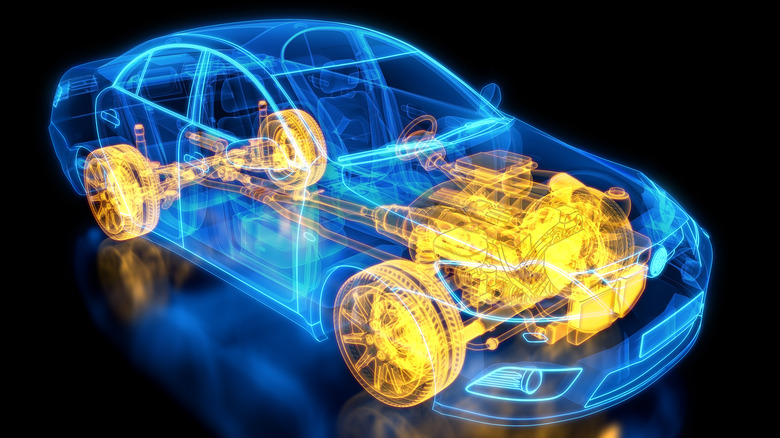
Henrik5000/Getty Images
When it comes to automotive innovation, some engines stand out not just for their power or efficiency, but for how they reshaped the industry and our expectations of what cars can achieve. Today, we’re looking at 10 innovative engines that jolted the auto industry, how they work, and what mark they left on automotive history.
We chose these engines because they’re trailblazers. Not only have they powered cars, but they have also sparked new ideas and possibilities. From the Ford Model T, which made cars affordable for more people, to the electric BMW i3 that showed us a cleaner way to drive, each engine has made a significant impact. These engines have driven some memorable cars, leading the way in innovation and influencing car design along the journey.
These innovative engines have helped make cars faster, more fuel-efficient, and less harmful to the environment, showing the power of creative thinking in car design and influencing consumer expectations. Looking at these engines tells a story of how car making has evolved and how designers and engineers are always looking for the next big thing that makes our rides better. It’s not only about how the engines have changed cars but also how we think about getting from Point A to Point B, steering us toward a future where driving is as fun as it is green.
Ford Model T Flathead V4 (1908) and V8 (1932)
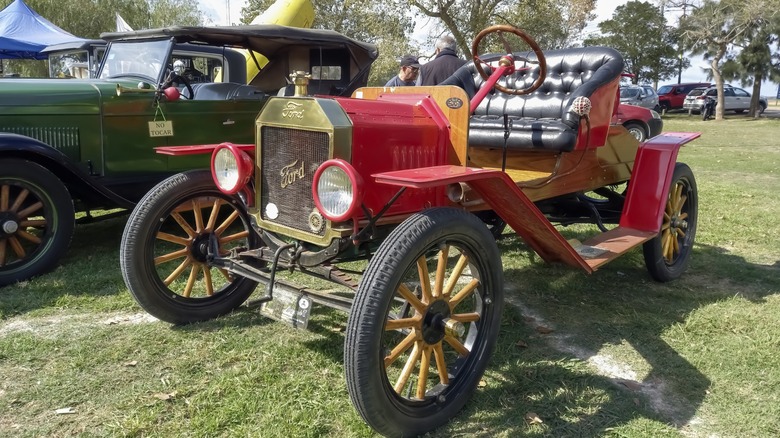
Sandro Leardini/Getty Images
First up is the Ford Model T, better known as the car that put America on wheels. The heart of this iconic vehicle was the T-4 engine, a marvel of its time that revolutionized the automotive world.
While 22 horsepower might not sound like much today, back then, it was quite impressive. More importantly, it shifted the entire country towards gasoline-powered internal combustion engines, moving away from the less reliable steam and electric predecessors. Its design featured innovations like removable cylinder heads and a cast crankcase, which made maintenance easier and helped standardize car production.
Ford’s assembly line approach and the T-4 engine drastically reduced costs, making the Model T the first car many American families could afford. This marked an important shift in society, making car ownership and personal transportation a reality for more people.
Fast forward a bit to the Ford Flathead V8, which was a game-changer in its own right. Despite not being the first V8 to hit the mass market (that was Cadillac in 1914), the Flathead V8 made V8 power attainable for the average person. Launched in 1932, this engine was about more than just its 80 horsepower. It laid the foundation for motorheads to tweak and tune their cars for more speed, kickstarting the beginnings of the hot-rodding culture and even laying the groundwork for NASCAR.
Fiat S76 (1910)
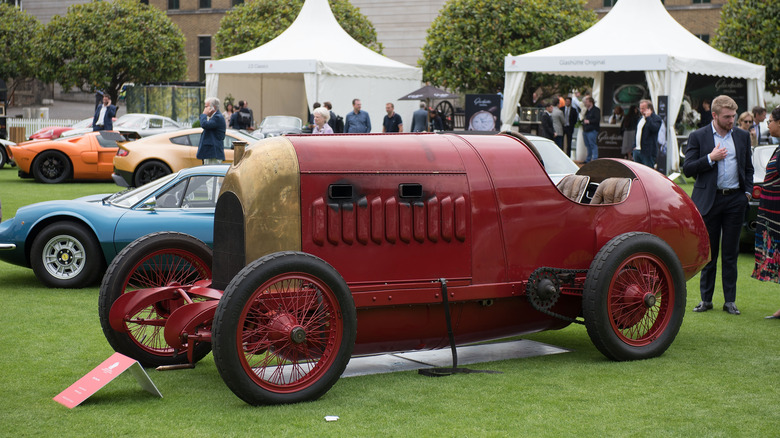
John Keeble/Getty Images
In 1911, Fiat decided to push the limits of speed and engineering with a bold attempt to beat the land speed record. The vehicle the company created was nothing short of extraordinary, known affectionately as «The Beast of Turin,» after its Italian birthplace.
The car was powered by a 28.4-liter, four-cylinder engine, a monster even by today’s standards, and an adaptation from airplane technology. This engine produced a staggering 290-300 horsepower designed to beat Karl Benz’s «Blitzen Benz» and its 126 MPH record.
The Fiat S76 was a powerful machine with a unique body to minimize air resistance. Even though it was designed to be as light as possible, the car still weighed in at a hefty 3,748 pounds. Its engineering focused on simplicity and efficiency, with features like solid axles, a chain drive, and brakes on the rear axle only. Speed was the goal here, rather than safety or comfort for the driver.
Fiat only ever produced two of these legendary cars. One ended up in the hands of a Russian Prince aiming to break the land speed record. With American driver Arthur Duray at the wheel, the car hit 132.27 MPH, but this record wasn’t officially recognized since there wasn’t a return run.
The Fiat S76 embodies a time when pushing the limits was the main goal of automotive design. It shows the evolution of car technology and serves as inspiration for pushing the boundaries in engineering and speed.
Chrysler Hemi V8 (1951)
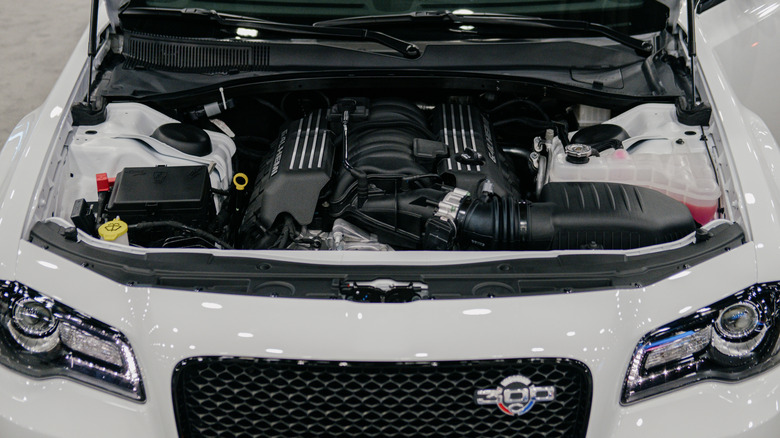
Bloomberg/Getty Images
Introduced in 1951, the Chrysler HEMI V8 engine changed the game for American cars by making power steering more widely available with its hydraulically assisted «Hydra-guide» steering. This engine is a key part of the muscle car era, powering classics like the Dodge Charger and Challenger.
The history of the HEMI engine starts with its use in Chrysler’s World War II aircraft engines before being adapted for cars in the 1950s, with names like «Firepower.» The «HEMI» name comes from the engine’s hemispherical combustion chambers, a design that allows for more volume above the piston, which leads to more efficient combustion. This design concept, dating back to 1901, became widely recognized for its effectiveness during WWII.
The first HEMIs were impressive, but the second-generation «Street Hemi» from 1964, with 426 cubic inches, really made a mark on muscle cars and motorsports. Today, HEMI engines vary from the 5.7-liter version in Ram 1500 trucks to the supercharged seven-liter Dodge Hellephant crate engine, showing the HEMI’s ability to adapt and continue to perform.
With the automotive industry shifting to electric vehicles, the future of new HEMI engines looks uncertain, especially as models like the Dodge Charger and Challenger are being phased out. However, the HEMI engine’s legacy is still recognized as a powerful and innovative force that shook up the industry in its heyday.
Wankel Rotary (Mazda, 1967)
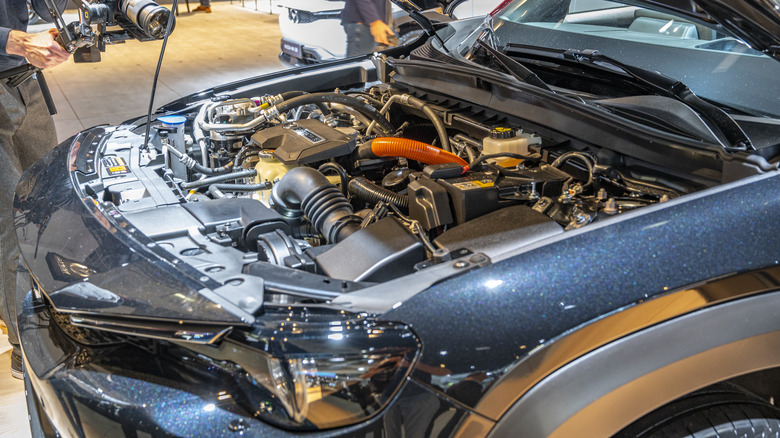
Sjoerd Van Der Wal/Getty Images
The rotary engine, also known as the Wankel engine, is a unique and innovative design that played an important role in defining Mazda’s identity (and keeping it afloat) in the automotive industry. Developed by Felix Wankel in 1954, this engine broke the mold with its unique spinning rotor design, challenging the traditional piston engines that dominated the automotive world. This new design led to smoother operation and a more compact design. Introduced in the NSU Spider in 1964, it presented an innovative approach to engine technology.
Mazda took this innovation to heart, making the rotary engine the powerhouse behind their beloved RX-7 and RX-8 sports cars. This engine stood out for its high revving power, compact size, and the fun driving experience it offered, even though it used more fuel and had some initial reliability issues. By opting for the rotary engine, Mazda demonstrated a willingness to explore innovative avenues in engine design.
The rotary engine came with challenges such as high fuel consumption and initial issues with seals. However, these problems didn’t overshadow its contributions. They were eventually solved, thanks to the work of Mazda engineers, led by Kenichi Yamamoto, with the introduction of a graphite-aluminium alloy seal and other creative engineering solutions.
Overcoming its initial difficulties, the Wankel rotary engine stresses Mazda’s willingness to innovate and embrace entirely new concepts. Its contribution to automotive technology earns it a deserved spot on this list, showing how fresh ideas can drive progress in the industry.
Honda CVCC (1972-75)
In the mid-1970s, when the automotive industry was grappling with new EPA emissions standards, Honda was quietly revolutionizing the game. While others predicted doom, fearing financial fallout and job losses from the strict Clean Air Act mandates, Honda saw an opportunity for innovation. They had been on this path since 1966, way ahead of the curve, working on how to make engines cleaner without sacrificing performance.
Enter the Honda Civic with its CVCC engine in 1975. Unlike its competitors, Honda’s CVCC didn’t rely on fragile catalytic converters to meet emissions standards. It could use both leaded and unleaded fuel without those converters. The engine worked differently by having a special chamber that allowed it to burn fuel more cleanly, making it an early leader in reducing car emissions.
This wasn’t just about meeting regulations — it was Honda’s vision for the future of driving, where environmental consciousness and fun driving could coexist. The CVCC engine helped put Honda ahead as an innovator, proving that cars could be enjoyable and eco-friendly at the same time.
The Honda Civic CVCC wasn’t just a car; it was a milestone in automotive history, proving that with a bit of ingenuity, you could indeed have it all. This engine was a turning point, changing the way car makers and consumers thought about the relationship between vehicles and environmental responsibility.
Toyota Prius Hybrid (1997)
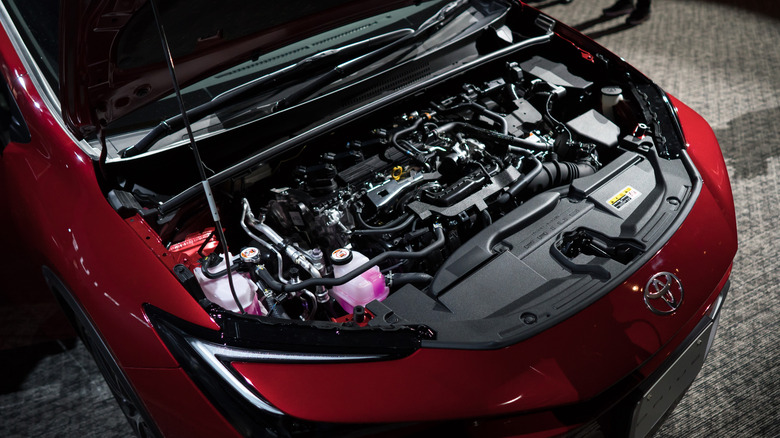
Tomohiro Ohsumi/Getty Images
The Toyota Prius, introduced in 1997 in Japan, revolutionized the auto industry by bringing hybrid technology to the mainstream. This marked a huge step forward for Toyota and cars in general, blending a gasoline engine with an electric motor to cut fuel use and emissions. Toyota had been working on this idea for five years, tackling challenges like making the battery last as long as the car itself.
The Toyota Hybrid System mixed a 1.5-liter engine with a high-torque electric motor, a generator, and a nickel-metal hydride battery. This setup became the blueprint for all Toyota hybrids that followed. This innovative engine launched on a new platform, paving the way for future models like the Corolla and RAV4. Despite its cutting-edge tech, the Prius kept a traditional, albeit controversial design, managing to look familiar while being revolutionary. Its sleek shape also made it slightly more fuel-efficient.
By May 2000, the Prius had gained popularity in both Japan and internationally, with more than 40,000 units in sales. This success confirmed the car’s balance of environmental friendliness and practicality, most notably its 560-mile driving range. To address any concerns about its hybrid technology, Toyota introduced a five-year mechanical warranty in the UK, a European first.
By the end of its first generation in August 2003, Toyota had sold over 123,000 Priuses worldwide, confirming the market’s interest in hybrid vehicles. The 2024 Prius model continues this trend, offering improved performance, better fuel efficiency, and an optional all-wheel-drive system.
Bugatti Veyron W-16 (2005–2015)
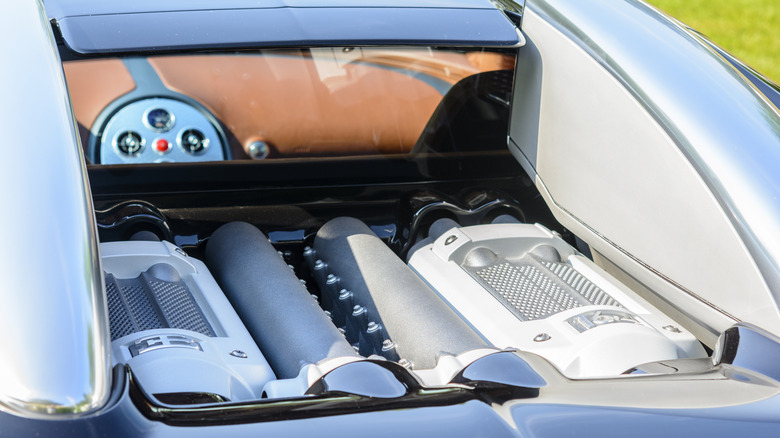
Sjo/Getty Images
In 2005, Bugatti rolled out the Veyron with a W-16 engine that truly shifted the gears in car engineering. This new engine combined four turbochargers with 1,500 horsepower to push cars faster than we ever thought possible, blending cutting-edge materials and engineering at the very top of what cars could achieve.
The Bugatti W-16 engine design was significant for being the most powerful in a production car at the time, producing 1,001 metric horsepower (987 American horsepower) and becoming the first road car to exceed 1,000 horsepower. Volkswagen, Bugatti’s parent company, developed the W-16 by combining two V8 engines, using shared cylinder heads and a crankshaft.
The idea for the W-16 engine came from an unlikely place: a bullet train ride in Japan, which caught the imagination of Volkswagen’s chairman, Ferdinand Piech, a longtime fan of 16-cylinder engines. To manage its massive power, the 8.0-liter engine with its four turbochargers needed an intricate cooling system with 10 radiators.
Bugatti announced in 2022 that the era of the W-16 engine was coming to an end, turning its focus to hybrids and electric engines. The W-16 engine, compact enough to fit in the same space as a V12 but lighter than a traditional V16, came from a 1997 idea by Piech.
The W-16 engine powered some of the fastest cars in the world, like the Veyron and Chiron, becoming a symbol of extreme automotive achievement with horsepower figures you’d more likely see on an aircraft than a street-legal car.
Tesla Electric Powertrain (2008)
In 2008, Tesla Motors launched its first car called the Roadster, which introduced an electric powertrain that helped to change how people viewed electric vehicles (EVs). This innovation challenged the status quo and showed that electric cars could compete with the familiar gas-guzzling internal combustion engines the world had grown accustomed to.
Tesla Motors used an alternating-current induction motor, a technology developed by Nikola Tesla in the 19th century. AC induction was efficient, simple, and reliable, allowing the motor to work well at different speeds. Initially, the Roadster had a two-speed transmission to help with acceleration and speed, but due to production issues, Tesla switched to a single-speed transmission that was more reliable.
The Roadster also had a power electronics module that managed the car’s power which allowed for fast acceleration and smooth driving. The car’s battery pack was made of 6,831 lithium-ion cells and a driving range of over 200 miles on a single charge. This was a substantial improvement over the older nickel-metal hydride batteries found in earlier hybrid cars. Tesla designed the Roadster with a lightweight aluminum frame and carbon-composite body panels to make it more efficient and extend its range.
The Tesla Electric Powertrain showed that EVs could have advanced technology and excellent performance, proving that electric cars could be as good as or better than some of the fastest sports cars. This was a big step in making electric vehicles more popular in the car market.
Ford EcoBoost V6 (2010)
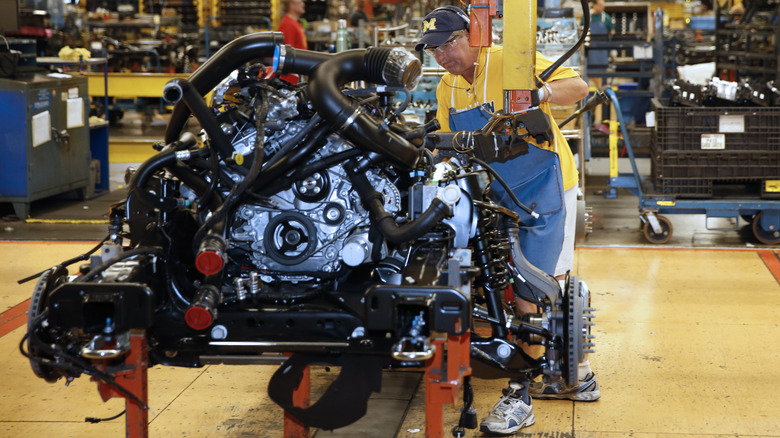
Bloomberg/Getty Images
When Ford rolled out the EcoBoost V6 in 2010, it didn’t just launch a new engine — it made a statement about the future of driving. This twin-turbocharged 3.5-liter engine was a breath of fresh air in an industry where you typically had to choose between performance and fuel efficiency. However, with the EcoBoost V6 in the 2010 Ford Taurus SHO, drivers could now have the best of both worlds.
The engine used a combination of turbocharging, direct fuel injection, and variable camshaft timing to improve both power output and fuel usage. This technology allowed the EcoBoost V6 to produce 365 horsepower, enabling the Taurus SHO to match the performance of cars with larger V8 engines while being more fuel-efficient.
Ford’s EcoBoost V6 didn’t just jolt the auto industry; it electrified it, showing that performance and efficiency could coexist. This engine proved that cars could be designed to be both exciting to drive and economical to run, breaking the stereotype that you must compromise one for the other. It was a big step forward in car engine technology, emphasizing the potential for future vehicles to reach a balance between environmental friendliness and performance.
BMW i3 Range Extender (2013)
In 2013, BMW launched the i3 with a smart feature for extending its range. Besides the main electric version, the i3 offered a range-extending engine. This small two-cylinder engine didn’t drive the car but charged the batteries, helping to overcome the usual range limits of electric vehicles.
The i3 came in two types: one purely electric with a 170 horsepower motor and a 33 kWh battery, and another, the Range Extender, which added a gasoline engine to recharge the battery. This setup allowed the i3 to travel further between charges. The electric i3 could go up to 114 miles on a charge, while the Range Extender model could reach about 180 miles by using both gasoline and electricity. Despite its advanced features aimed at efficiency, the main selling point was easing concerns about running out of battery power.
The i3’s design had mixed reviews, with a modern look and an interior known for being both futuristically stylish and made from sustainable materials. It received particular praise for its quick acceleration and easy handling in cities. However, the i3 faced challenges, like the electric version’s limited range and the Range Extender’s small fuel tank, which required thoughtful planning for longer trips.
Overall, the BMW i3 marked an important development in electric cars by offering a practical way to extend driving range, and demonstrated BMW’s commitment to innovative and environmentally friendly vehicle technology.